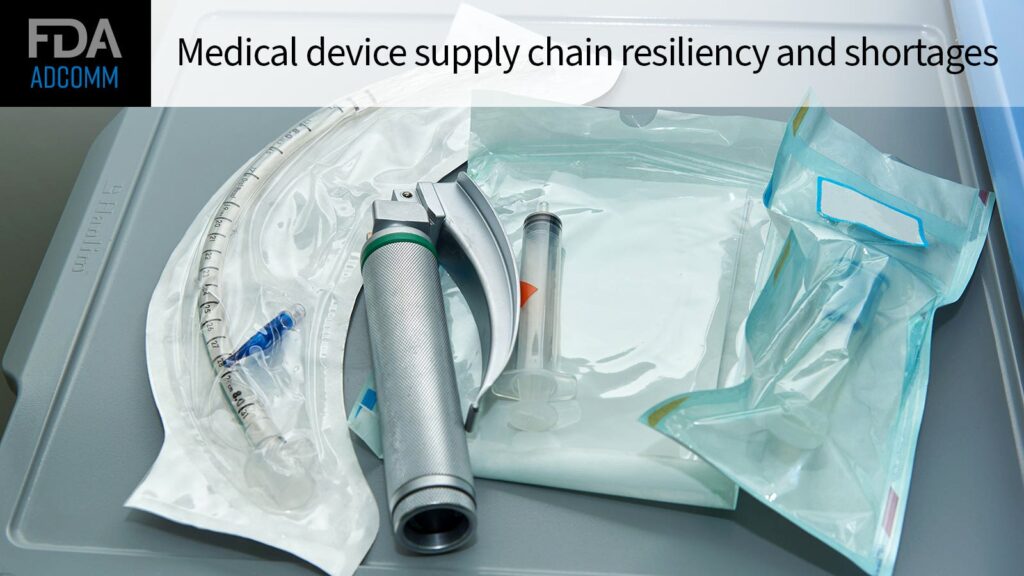How do you determine whether a particular medical device is critical to public health? That is the topic to be considered by the FDA’s General Hospital and Personal Use Devices Panel during its meeting on Tuesday.
The impetus for the meeting comes in part from a law passed by Congress in March 2020. The law, known as Section 506J, requires manufacturers to notify the agency of any discontinuation of or disruption in the manufacture of certain critical medical devices during — or in advance of — a public health emergency, the FDA said in a briefing document. A later law, part of an amendment to the Coronavirus Aid, Relief, and Economic Security Act, requires the FDA to issue or revise guidance regarding the Section 506J requirements.
One of the questions the FDA must address is which devices should fall under 506J, which defines “critical” medical devices as those that are “critical to public health during a public health emergency, including devices that are life-supporting, life-sustaining, or intended for use in emergency medical care or during surgery.”
“As experience has demonstrated, the earlier the FDA is notified about an impending supply chain disruption for critical devices, the more effective the FDA can be at working with stakeholders (e.g., manufacturers, distributors, providers, healthcare systems, group purchasing organizations, and suppliers) and federal partners to prevent significant harm to patients that can result from shortages,” FDA staff wrote in the briefing document.
Once the agency is notified of a shortage, it can conduct an assessment of the supply chain for that particular device and develop a strategy to mitigate the shortage, which might include regulatory actions such as emergency use authorization, enforcement discretion, and letters to providers, as well as other actions like priority request letters or transportation prioritization. “These mitigations, when applied early, can prevent shortages that impact patients, healthcare providers, and our most vulnerable populations (e.g., pediatrics, pregnant women, immunocompromised),” the document noted. “In addition, information about the supply chains of critical devices is needed for predicting vulnerabilities and … building resiliency in these supply chains.”
The FDA issued draft guidance on Section 506J in November 2023. The draft guidance included a list of devices that would be subject to the notification requirement, and noted that the agency is accepting comments on the list through Feb. 15th. The FDA has classified more than 1,700 distinct types of devices and organized them into 16 medical specialty panels, such as “cardiovascular devices” or “ear, nose, and throat devices.” Within the panels, each type of device is given its own product code. The cardiovascular panel has the most product codes at 57, while physical medicine has the least, with only two.
At Tuesday’s meeting, the FDA is seeking the panel’s guidance on whether there are device types that should be removed because they don’t meet the 506J requirement of being critical to public health; whether there are device types that should be added; how supply chain resilience and vulnerabilities should be considered when choosing devices for the list; and how certain device types — including single-use disposable versus multi-patient reusable devices, convenience kits, and capital equipment such as imaging devices — be addressed when it comes to inclusion or exclusion from the list.
None of the questions to the panel require a vote. The FDA is not required to follow the advice of its advisory panels, but often does.
Please enable JavaScript to view the comments powered by Disqus.
Source link : https://www.medpagetoday.com/publichealthpolicy/publichealth/108582
Author :
Publish date : 2024-02-05 16:35:26
Copyright for syndicated content belongs to the linked Source.
